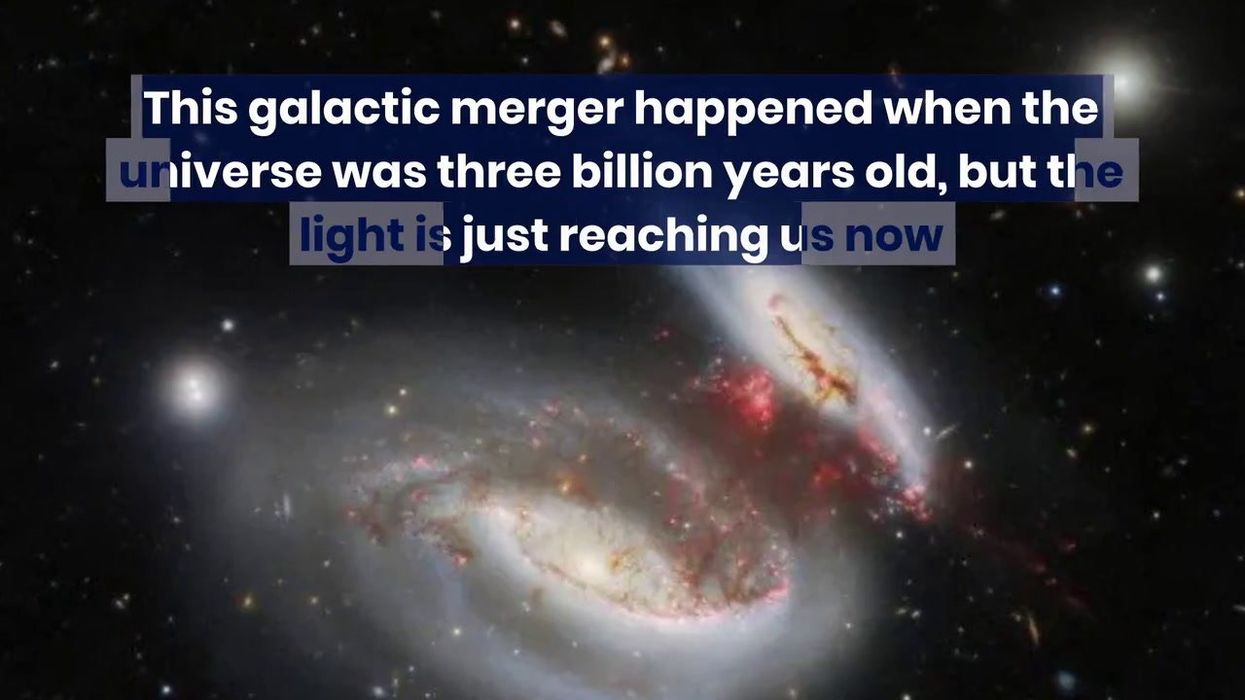Science & Tech
Harry Fletcher
Apr 10, 2023
2 Merging Supermassive Black Holes Spotted In Early Universe
content.jwplatform.com
There’s still so much we’ve yet to learn about black holes, but the latest notable discovery is changing attitudes towards them in the scientific community.
Normally, we think of black holes as huge celestial objects with gravity strong enough to pull light from the universe. However, the latest one being observed is having exactly the opposite effect.
A "runaway" supermassive black hole has been spotted travelling at four million miles per hour away from its galaxy.
Rather than hoovering up light around it, the object is thought to be actively producing new baby stars.
Sign up to our new free Indy100 weekly newsletter
A trail of newborn stars has now been detected in its wake, stretching an incredible 200,000 light-years in length.
\u201cTwo's company, and three's a crowd... even when it comes to black holes!\n\nHubble detected evidence of a "runaway" black hole that was ejected from its host galaxy after a tussle between it and two other black holes. Find out more: https://t.co/hEs3i7MUma\u201d— Hubble (@Hubble) 1680791309
As ever with black holes, the reason for this unusual activity isn’t exactly clear. However, the findings were reported in the Astrophysical Journal Letters by a team led by Yale astronomy professor Pieter van Dokkum.
The findings were also observed in NASA's Hubble Space Telescope, with Dokkum’s research suggesting that when the black hole comes into contact with gas it sparks new stars into life as the gas cools down.
“What we’re seeing is the aftermath," Dokkum said. "Like the wake behind a ship, we’re seeing the wake behind the black hole.”
Black holes continue to fascinate the scientific community, and the latest news comes just days after the recent discovery of the two closest black holes to Earth.
The celestial bodies were captured by the European Space Agency’s (ESA) Gaia satellite which is currently creating a detailed map of all the stars in the Milky Way.
They are located 1,560 light-years and 3,800 light-years away which, given that our galaxy measures 105,000 light-years side to side, means they’re positively on our doorstep.
Have your say in our news democracy. Click the upvote icon at the top of the page to help raise this article through the indy100 rankings.
Top 100
The Conversation (0)














